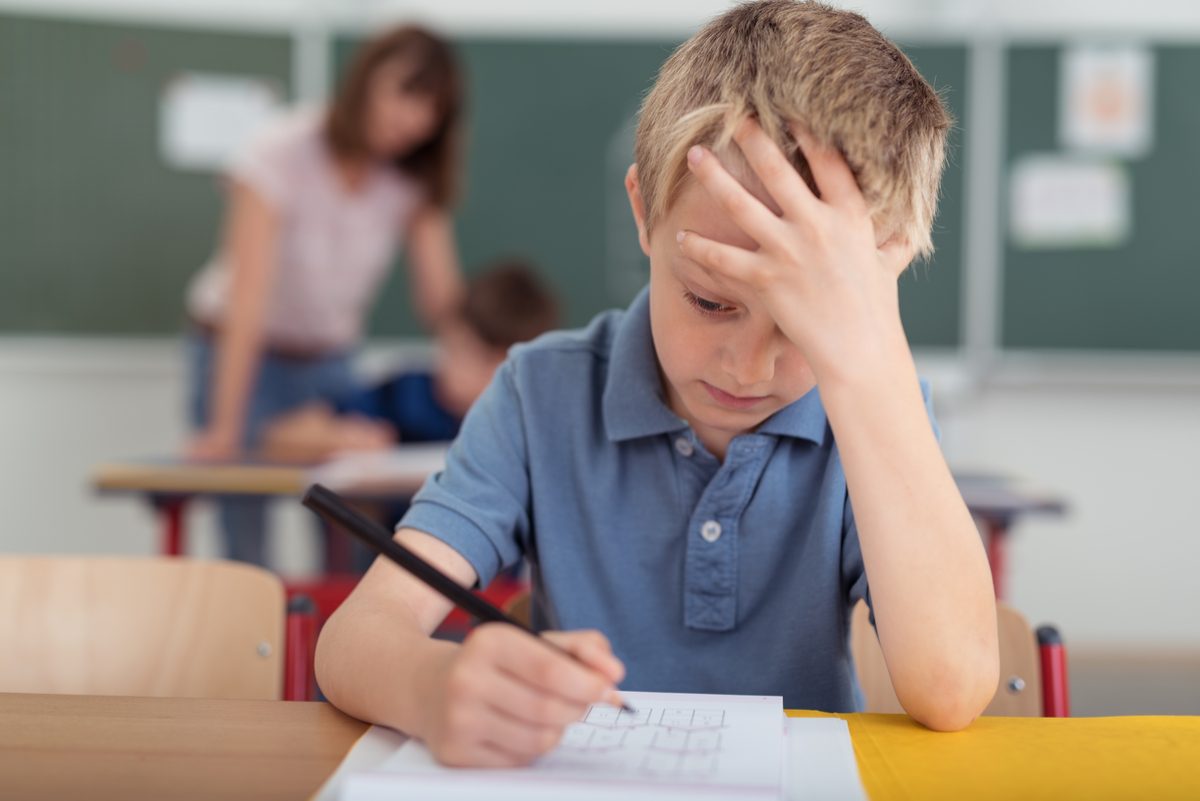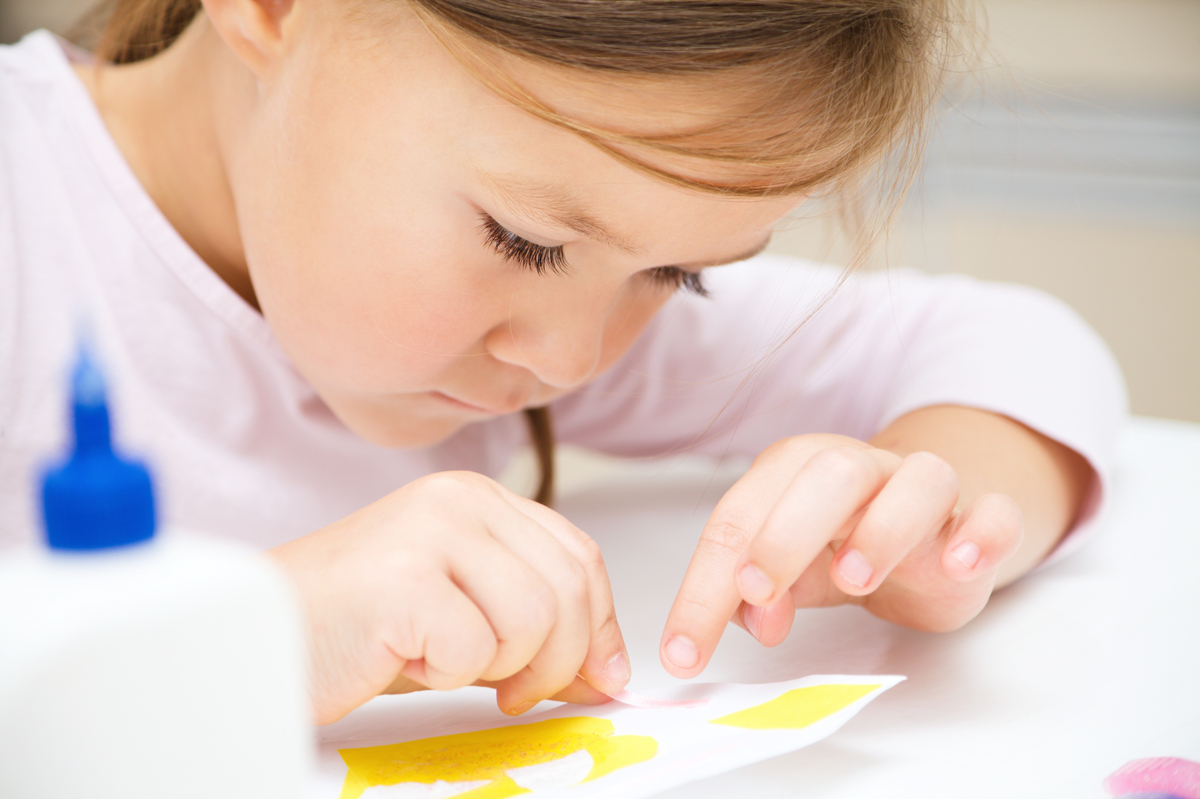Do you see what I see?
Today is World Mental Health Day for 2017 and this, the catchcry for the Australian campaign, is a simple reminder that sometimes the world that we see can look far different through the eyes of the person standing beside us.
To contribute to this important conversation about mental health, Teach Starter is proud to bring you a conversation with Linda Privitelli from little wuppy® about teaching kids who experience anxiety. Linda is a former primary school teacher and someone who lives with anxiety herself. In this interview, she gives insight into what can trigger anxiety in students, what behaviours that can act as clues for teachers to look out for and ten practical ways that teachers can support students in their own classrooms.
TS: Most teachers are aware that kids can experience separation anxiety but what else can cause or trigger anxiety for students in the classroom?
Linda: There are a number of factors that can trigger anxiety for children in the classroom:
- Change: change of routine, change of teacher, change of friends, change of environment. Speaking from experience, someone who is anxious tends to enjoy routine and predictability. When entering a new classroom filled with new people and surroundings, this can trigger panic and fear in children as they may no longer feel in control. It all becomes new and feels unpredictable.
- Fear of failure: some children feel like they always need to be at their best. They are worried about getting an answer wrong, they worry about not being able to do things, they worry about the ramifications from peers if they are seen as ‘less capable’ compared to others.
- Peer relations: making new friends and maintaining current friendships can be overwhelming for some children. Approaching new people can be quite a daunting experience, as can group work with unfamiliar peers. Peer pressure can also become a factor. Self-doubt amongst peers and worrying about ‘fitting in’ can also cause anxiety for children.

TS: What kind of behaviours or situations can act as “clues” for a teacher to recognise that a student may be experiencing anxiety?
Linda: Anxiety can be expressed in many ways by children, and may also be connected to other things like behavioural issues, sensory processing challenges, learning difficulties, cultural differences and issues in the home.
Some ‘clues’ that I noticed anxious children demonstrated were:
- Withdrawal: not wanting to participate in group activities, sitting by themselves, playing by themselves.
- Change in behaviour: acting differently to how they usually would, ‘acting out’, retreating, showing frustration or anger.
- Overcompensating with humour and/or sarcasm: sometimes putting on a ‘mask’ or drawing attention to something else, can reflect the deflection of feelings of worry or insecurity.
- Becoming defensive: some children may become defensive when questioned about their feelings because they either didn’t want to talk about them or didn’t know how to.
- Hypersensitivity: becoming extra sensitive to situations, fighting with friends, becoming emotional unexpectedly, being angry or upset if they didn’t know an answer, crying, frustration and general sadness.
- Fidgeting and being unsettled: sitting still can be tricky for an anxious child. They may seem like there are squirming in their seats, they may tap on things, they may pick at things, chew on things and feel more comfortable moving around/swaying/rocking.
- Complaining of illness: the physical symptoms of anxiety can cause children to feel sick (nausea, stomach aches, headaches, dizziness, shaky).
10 Ways to Help Anxious Students in the Classroom
Based on her experience as a primary school teacher, I asked Linda to provide some practical, actionable suggestions for teachers who are supporting anxious students in their classroom.

TS: What can teachers do when a child’s anxiety is affecting their experiences at school or in the classroom?
Linda: There are many ways that worry and anxiety can be managed within the classroom and at school. What is most important though, is finding what works best for the individual child. There may be some trial and error involved, but the best place to start is asking the child what helps to make them feel more relaxed and comfortable.
Here are some suggestions:
1. Talk to the child.
But don’t force them to open up about their feelings if they don’t feel comfortable. Just let them know you are there for them if they ever need to chat. Or, allow them time to chat to their friends, school counsellors or someone else they trust.
2. Talk to their parents or carers.
One of the most important things as a teacher is understanding a child, and who better to help you with this than their parents or carers. Honest and open discussions are paramount to the success of a child in the classroom. Ask them questions, share what you’ve noticed, and ensure they know you are here to help their child, not to make things harder for them.
3. Have a code word or special signal.
Something that a child can use when they feel anxious or worried. It may be something only the child, you, and their close friend/s know about.
4. Encourage movement and being active.
Physical activity can help burn energy and the adrenalin created by anxiety. Running around at play times, rocking or swaying, swinging their legs under a chair in class, or performing through singing and dancing, can help release this energy. Repetitive actions can also help to calm an anxious child.
5. Drawing, painting, colouring, using playdough and creating with their hands.
These kinds of kinesthetic activities can help calm and refocus a child if they are feeling worried or anxious. Incorporating this into their learning can be most beneficial.

6. Listening to music.
Music can help to soothe an anxious child. Allowing children to wear headphones while they work can help certain children stay focused.
7. Expressing themselves through the written word.
Letter writing, story writing or writing poetry, can also help children gather their thoughts.
8. Allowing an anxious child to have some ‘time out’.
They may have a certain space in the classroom where they can sit and just be, or they may be able to sit and do an activity that helps calm them. Older students may be able to go for a walk around the school to breathe in fresh air and refocus. Younger students may be able to do this accompanied by a staff member such as a teacher aide.
9. Fidget tools.
These can be used discretely by children (due to their size) to help keep their fingers and hands busy, helping them to stay more focused. They can be popped into a pocket or pencil case for quick and easy access.
10. Textured comfort aids.
Tactile aids like furry cushions and the little wuppy® have been used successfully in the classroom and at school to help ease children’s worries. Some children use textured surfaces for tactile comfort, so the satin-feel tag and soft minky fabric backing of the little wuppy® are great ways for children to soothe themselves.
Anxiety in children can be both triggered, and managed, in a variety of ways. The key to helping children successfully manage their anxiety in the classroom is to understand what works best for that child. Honest and open dialogues between parents, children and the teacher are so important. We need to respect each child’s differences and provide opportunities for them to learn in a way that makes them feel most comfortable.
 Linda Privitelli is a former primary school teacher who left full-time teaching due to the impact of her own experience of severe anxiety and panic attacks. In her six years of teaching, she noticed what triggered anxiety in children, how they expressed their anxieties and which strategies were successful in helping them manage their worries and anxieties.
Linda Privitelli is a former primary school teacher who left full-time teaching due to the impact of her own experience of severe anxiety and panic attacks. In her six years of teaching, she noticed what triggered anxiety in children, how they expressed their anxieties and which strategies were successful in helping them manage their worries and anxieties.
Linda has now designed and developed the Little Wuppy, an aid to help school-aged children manage the overwhelming thoughts and feelings associated with anxiety. She is extremely passionate about helping children and their families and continues to help break down the ugly stigma associated with mental health issues with her open and honest conversations about her own experiences.
Disclaimer: Please note, Linda is not a trained doctor or psychologist. She has provided information in this article based on her own experiences as a teacher within a classroom, and her own experiences as a person living with anxiety. Linda’s words should not be used a diagnosis that your child suffers anxiety. If you are concerned with your child’s behaviour or well-being, please seek advice from a medical professional.








Comments